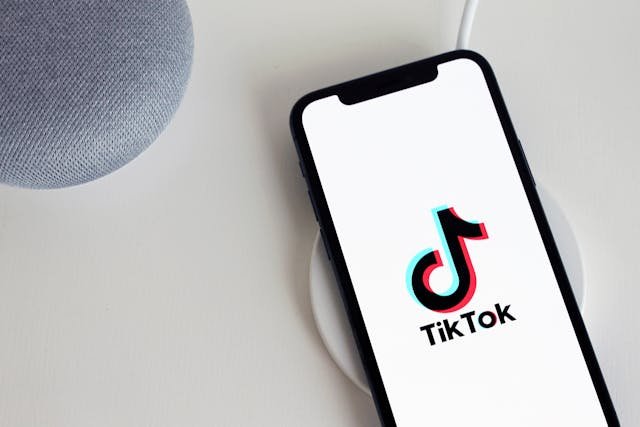- 1. How Prevalent is Social Media Marketing Among Small Businesses?
- 2. How Important is Content Marketing for Small Businesses?
- 3. What ROI Do Small Businesses Get from Email Marketing?
- 4. Are Small Businesses Increasing Their Digital Marketing Budgets?
- 5. How Common is Search Engine Marketing Among Small Businesses?
- 6. How Many Small Businesses Use CRM Software?
- 7. What is the Top Marketing Priority for Small Businesses?
- 8. How Do Small Businesses Use Data Analytics in Marketing?
- 9. Do Small Businesses Have Dedicated Marketing Teams?
- 10. What is the Trend in Video Marketing for Small Businesses?
- 11. Which Paid Advertising Channels Are Most Effective for Small Businesses?
- 12. How Common is Influencer Marketing Among Small Businesses?
- 13. How Important is Having a Website for Small Businesses?
- 14. How Many Small Businesses Optimize Their Websites for Mobile Users?
- 15. How Many Small Businesses Plan to Use AI-Powered Marketing Tools in 2024?
- 16. How Many Small Businesses Track Their Marketing ROI?
- 17. How Important is Local SEO for Small Businesses?
- 18. How Many Small Businesses Use Facebook for Marketing?
- 19. How Many Small Businesses Use Instagram for Marketing?
- 20. How Many Small Businesses Utilize LinkedIn for B2B Marketing?
- 21. How Do Small Businesses Use Email Marketing?
- 22. How Many Small Businesses Use Customer Reviews and Testimonials in Their Marketing?
- 23. How Many Small Businesses Offer Loyalty Programs?
- 24. How Many Small Businesses Have a Blog to Support Their Content Marketing Efforts?
- 25. How Many Small Businesses Use Chatbots for Customer Service and Marketing?
- 26. How Many Small Businesses Plan to Increase Investment in Paid Search Ads?
- 27. How Does Marketing Automation Benefit Small Businesses?
- 28. How Many Small Businesses Use Video Content on Social Media Platforms?
- 29. How Many Small Businesses Plan to Host Virtual Events or Webinars in 2024?
- 30. How Important is Marketing for Small Business Growth?
- Conclusion
- We got all the latest Marketing Stats here:
Marketing is the lifeblood of small businesses, helping them reach new customers, build brand awareness, and drive sales. In 2024, the marketing landscape continues to evolve, and staying informed about the latest trends and statistics is crucial for success. This article will explore key marketing statistics for small businesses in 2024, providing insights and actionable advice to help you enhance your marketing efforts. Let’s dive in!
1. How Prevalent is Social Media Marketing Among Small Businesses?

93% of Small Businesses Use Social Media for Marketing
In 2024, social media remains a dominant force in marketing, with 93% of small businesses leveraging these platforms to connect with their audience. Social media offers a cost-effective way to reach a large and engaged audience, making it a staple in most marketing strategies.
Actionable Advice:
To make the most of social media marketing, identify the platforms where your target audience is most active. Create a content calendar to ensure consistent posting, and use tools like Hootsuite or Buffer to schedule your posts. Engage with your audience by responding to comments and messages promptly, and use analytics to track your performance and adjust your strategy as needed.
2. How Important is Content Marketing for Small Businesses?
70% of Small Businesses Invest in Content Marketing
Content marketing is a priority for 70% of small businesses, highlighting its importance in building brand authority and attracting customers. High-quality content can educate, entertain, and inspire your audience, driving them to take action.
Actionable Advice:
Develop a content strategy that aligns with your business goals and addresses the needs of your target audience. Focus on creating valuable and relevant content, such as blog posts, videos, infographics, and eBooks. Use SEO best practices to improve your content’s visibility in search engines and promote your content through social media and email marketing.
3. What ROI Do Small Businesses Get from Email Marketing?
60% of Small Businesses Report That Email Marketing is Their Top ROI Channel
Email marketing continues to deliver strong results, with 60% of small businesses citing it as their top channel for return on investment. Email marketing allows for personalized communication with customers and prospects, driving higher engagement and conversions.
Actionable Advice:
Build and maintain a clean email list by regularly removing inactive subscribers and segmenting your audience based on their preferences and behaviors. Craft compelling subject lines and create valuable content that resonates with your audience. Use automation to send targeted emails at the right time and track your campaign performance to optimize future efforts.
4. Are Small Businesses Increasing Their Digital Marketing Budgets?
47% of Small Businesses Plan to Increase Their Digital Marketing Budget in 2024
Nearly half of small businesses are planning to boost their digital marketing budgets in 2024. This increase reflects the growing importance of digital channels in reaching and engaging customers.
Actionable Advice:
Allocate your increased budget strategically by investing in the most effective digital marketing channels for your business. Consider expanding your efforts in areas like social media advertising, search engine marketing, and content creation. Regularly review your spending and performance metrics to ensure you’re getting the best return on your investment.
5. How Common is Search Engine Marketing Among Small Businesses?
66% of Small Businesses Rely on Search Engine Marketing (SEM)
Search engine marketing (SEM) is a key strategy for 66% of small businesses, helping them improve their visibility in search engine results and attract potential customers.
Actionable Advice:
Invest in both organic and paid search strategies to maximize your visibility. Optimize your website and content for relevant keywords to improve your organic search rankings. Use pay-per-click (PPC) advertising to target specific keywords and drive immediate traffic to your site. Continuously monitor your campaigns and make data-driven adjustments to improve performance.
6. How Many Small Businesses Use CRM Software?
52% of Small Businesses Use CRM Software to Manage Customer Relationships
Customer relationship management (CRM) software is used by 52% of small businesses to streamline their sales and marketing processes and improve customer interactions.
Actionable Advice:
Choose a CRM system that fits your business needs and budget. Use it to centralize customer data, track interactions, and manage leads and sales. Integrate your CRM with other marketing tools to create a seamless workflow and gain deeper insights into your customer behavior and preferences.
7. What is the Top Marketing Priority for Small Businesses?
80% of Small Businesses Say That Improving Customer Experience is Their Top Marketing Priority
Improving customer experience is the top priority for 80% of small businesses. A positive customer experience can lead to higher satisfaction, loyalty, and referrals.
Actionable Advice:
Focus on understanding your customers’ needs and preferences. Use surveys, feedback forms, and social media to gather insights. Personalize your marketing efforts to make customers feel valued and appreciated. Continuously evaluate and improve every touchpoint in the customer journey to ensure a seamless and enjoyable experience.
8. How Do Small Businesses Use Data Analytics in Marketing?
64% of Small Businesses Use Data Analytics to Guide Their Marketing Decisions
Data analytics is a powerful tool for 64% of small businesses, helping them make informed marketing decisions and optimize their strategies.
Actionable Advice:
Implement analytics tools like Google Analytics, social media insights, and email marketing reports to track your marketing performance. Use the data to identify trends, measure the effectiveness of your campaigns, and make data-driven decisions. Regularly review your analytics to stay informed and adjust your strategies accordingly.
9. Do Small Businesses Have Dedicated Marketing Teams?
55% of Small Businesses Have a Dedicated Marketing Team or Person
More than half of small businesses have a dedicated marketing team or person, underscoring the importance of having skilled professionals to manage marketing efforts.
Actionable Advice:
If you don’t already have a dedicated marketing team, consider hiring or outsourcing to fill this gap. Look for individuals with a strong understanding of digital marketing, content creation, and data analysis. Provide ongoing training and resources to keep your team updated on the latest marketing trends and best practices.
10. What is the Trend in Video Marketing for Small Businesses?

72% of Small Businesses Plan to Invest More in Video Marketing in 2024
Video marketing is on the rise, with 72% of small businesses planning to increase their investment in this engaging format in 2024. Videos can effectively capture attention and convey your message in a dynamic and memorable way.
Actionable Advice:
Incorporate video into your marketing strategy by creating a variety of content, such as product demos, customer testimonials, behind-the-scenes looks, and educational videos. Optimize your videos for different platforms and use compelling thumbnails and titles to attract viewers. Track the performance of your videos to understand what resonates with your audience and refine your approach.
11. Which Paid Advertising Channels Are Most Effective for Small Businesses?
67% of Small Businesses Find That Social Media Ads Are Their Most Effective Paid Advertising Channel
Social media ads are the most effective paid advertising channel for 67% of small businesses. Platforms like Facebook, Instagram, and LinkedIn offer targeted advertising options that allow businesses to reach their ideal audience.
Actionable Advice:
To maximize the effectiveness of social media ads, start by identifying your target audience and creating buyer personas. Use these personas to guide your ad targeting and messaging. Experiment with different ad formats, such as image ads, video ads, and carousel ads, to see what resonates best with your audience. Monitor your ad performance and adjust your campaigns based on the data.
12. How Common is Influencer Marketing Among Small Businesses?
40% of Small Businesses Use Influencer Marketing
Influencer marketing is utilized by 40% of small businesses to reach new audiences and build credibility. Collaborating with influencers can help small businesses gain visibility and trust within their target market.
Actionable Advice:
Identify influencers who align with your brand values and have a following that matches your target audience. Reach out to them with a clear proposal and value proposition. Track the performance of your influencer campaigns by monitoring engagement metrics and sales generated from these partnerships. Build long-term relationships with influencers for ongoing collaboration.
13. How Important is Having a Website for Small Businesses?
78% of Small Businesses Believe That Having a Website is Essential for Their Marketing Strategy
A strong online presence starts with a website, and 78% of small businesses consider it essential for their marketing strategy. A well-designed website serves as the central hub for your online activities and helps establish credibility.
Actionable Advice:
Ensure your website is user-friendly, mobile-optimized, and easy to navigate. Include key information such as your business description, contact details, product or service offerings, and customer testimonials. Regularly update your website with fresh content, such as blog posts and case studies, to keep it engaging and improve SEO.
14. How Many Small Businesses Optimize Their Websites for Mobile Users?
59% of Small Businesses Optimize Their Website for Mobile Users
With more people accessing the internet on their mobile devices, 59% of small businesses optimize their websites for mobile users. Mobile optimization is crucial for providing a seamless user experience and improving search engine rankings.
Actionable Advice:
Use responsive design to ensure your website looks and functions well on all devices. Simplify navigation and make sure buttons and links are easy to tap. Optimize images and content to load quickly on mobile devices. Test your website regularly on different devices to identify and fix any issues.
15. How Many Small Businesses Plan to Use AI-Powered Marketing Tools in 2024?
35% of Small Businesses Plan to Use AI-Powered Marketing Tools in 2024
Artificial intelligence (AI) is becoming increasingly popular in marketing, with 35% of small businesses planning to use AI-powered tools in 2024. These tools can help automate tasks, analyze data, and improve marketing efficiency.
Actionable Advice:
Explore AI-powered tools that can benefit your business, such as chatbots for customer service, predictive analytics for marketing campaigns, and personalization engines for email marketing. Start with one or two tools and gradually integrate more as you become comfortable with the technology. Monitor the impact of these tools on your marketing performance and make adjustments as needed.

16. How Many Small Businesses Track Their Marketing ROI?
68% of Small Businesses Track Their Marketing ROI
Tracking marketing ROI is essential for understanding the effectiveness of your campaigns, and 68% of small businesses make it a priority. Knowing which strategies deliver the best return on investment helps businesses allocate resources more efficiently.
Actionable Advice:
Implement tracking mechanisms for all your marketing activities, such as UTM parameters for online campaigns and unique phone numbers for offline promotions. Use analytics tools to measure key performance indicators (KPIs) and calculate ROI for each campaign. Regularly review your ROI data to identify successful strategies and areas for improvement.
17. How Important is Local SEO for Small Businesses?
45% of Small Businesses Report That Local SEO is Crucial for Their Business
Local SEO is crucial for 45% of small businesses, helping them attract customers in their local area. Optimizing for local search can improve visibility in search engine results and drive more foot traffic to your business.
Actionable Advice:
Claim and optimize your Google My Business listing with accurate information, including your address, phone number, and business hours. Encourage customers to leave reviews and respond to them promptly. Use local keywords in your website content and meta descriptions. Participate in local events and online communities to increase your local visibility.
18. How Many Small Businesses Use Facebook for Marketing?
76% of Small Businesses Use Facebook for Marketing Purposes
Facebook remains a popular marketing platform, with 76% of small businesses using it to connect with their audience. Facebook offers robust advertising options and a large user base, making it an effective channel for reaching potential customers.
Actionable Advice:
Create a Facebook business page and regularly post engaging content, such as updates, promotions, and customer stories. Use Facebook Ads to target specific demographics and interests. Utilize Facebook Insights to track your page’s performance and adjust your strategy accordingly.
19. How Many Small Businesses Use Instagram for Marketing?
53% of Small Businesses Use Instagram for Marketing
Instagram is another powerful platform for small businesses, with 53% using it for marketing. Instagram’s visual nature makes it ideal for showcasing products and connecting with customers on a more personal level.
Actionable Advice:
Develop a cohesive Instagram aesthetic that reflects your brand’s personality. Use high-quality images and videos to capture attention. Engage with your followers by responding to comments and messages. Utilize Instagram Stories, Reels, and IGTV to diversify your content and keep your audience engaged.
20. How Many Small Businesses Utilize LinkedIn for B2B Marketing?

36% of Small Businesses Utilize LinkedIn for B2B Marketing
LinkedIn is a valuable platform for B2B marketing, with 36% of small businesses using it to connect with other businesses and professionals. LinkedIn offers opportunities for networking, lead generation, and thought leadership.
Actionable Advice:
Create a professional LinkedIn profile for your business and share industry insights, company updates, and valuable content. Connect with potential clients and partners by sending personalized connection requests. Participate in LinkedIn Groups and engage in discussions to increase your visibility and credibility within your industry.
21. How Do Small Businesses Use Email Marketing?
81% of Small Businesses That Use Email Marketing Send Newsletters
Email newsletters are a staple for 81% of small businesses that use email marketing. Newsletters keep your audience informed about your latest updates, promotions, and valuable content, helping to maintain engagement and build relationships.
Actionable Advice:
Create a newsletter schedule and stick to it consistently. Include a mix of content, such as company news, industry insights, and special offers, to keep your subscribers interested. Use personalized greetings and tailor content based on subscriber preferences. Track open rates, click-through rates, and other metrics to refine your newsletter strategy.
22. How Many Small Businesses Use Customer Reviews and Testimonials in Their Marketing?
61% of Small Businesses Use Customer Reviews and Testimonials in Their Marketing
Customer reviews and testimonials are powerful tools, used by 61% of small businesses to build trust and credibility. Positive reviews can significantly influence potential customers’ decisions and enhance your brand’s reputation.
Actionable Advice:
Encourage satisfied customers to leave reviews on platforms like Google, Yelp, and social media. Feature testimonials prominently on your website and in marketing materials. Respond to reviews, both positive and negative, to show that you value customer feedback and are committed to improving their experience.
23. How Many Small Businesses Offer Loyalty Programs?
49% of Small Businesses Offer Loyalty Programs to Retain Customers
Loyalty programs are a popular strategy for 49% of small businesses to retain customers and encourage repeat purchases. These programs reward customers for their continued support, fostering loyalty and increasing lifetime value.
Actionable Advice:
Design a loyalty program that offers meaningful rewards, such as discounts, freebies, or exclusive access to new products. Make it easy for customers to join and participate in the program. Promote your loyalty program through email marketing, social media, and in-store signage to maximize enrollment and engagement.
24. How Many Small Businesses Have a Blog to Support Their Content Marketing Efforts?
54% of Small Businesses Have a Blog to Support Their Content Marketing Efforts
Blogging is an essential part of content marketing for 54% of small businesses. Blogs help attract visitors to your website, improve SEO, and establish your authority in your industry.
Actionable Advice:
Create a content calendar to plan and organize your blog posts. Focus on topics that address your audience’s pain points and interests. Optimize your posts with relevant keywords, internal links, and high-quality images. Promote your blog content through social media and email newsletters to drive traffic and engagement.
25. How Many Small Businesses Use Chatbots for Customer Service and Marketing?
42% of Small Businesses Use Chatbots for Customer Service and Marketing
Chatbots are used by 42% of small businesses to enhance customer service and support marketing efforts. Chatbots can handle common queries, provide instant responses, and guide visitors through their customer journey.
Actionable Advice:
Implement chatbots on your website and social media platforms to provide 24/7 customer support. Program your chatbots to answer frequently asked questions, offer product recommendations, and assist with transactions. Monitor chatbot interactions to ensure they are providing accurate and helpful information, and make improvements as needed.
26. How Many Small Businesses Plan to Increase Investment in Paid Search Ads?

50% of Small Businesses Plan to Increase Their Investment in Paid Search Ads in 2024
Paid search ads are a key focus for 50% of small businesses planning to increase their investment in this area. Paid search ads can drive targeted traffic to your website and generate high-quality leads.
Actionable Advice:
Conduct keyword research to identify high-performing keywords relevant to your business. Create compelling ad copy and use targeted landing pages to improve conversion rates. Set a budget and monitor your ad spend to ensure you are getting a good return on investment. Use analytics to track performance and optimize your campaigns continuously.
27. How Does Marketing Automation Benefit Small Businesses?
69% of Small Businesses Say That Marketing Automation Helps Them Save Time
Marketing automation is a valuable tool for 69% of small businesses, helping them save time and streamline their marketing processes. Automation can handle repetitive tasks, allowing you to focus on strategy and creative work.
Actionable Advice:
Implement marketing automation tools to manage email campaigns, social media posts, and lead nurturing. Set up automated workflows to trigger actions based on user behavior, such as sending a welcome email when someone subscribes to your newsletter. Regularly review your automation workflows to ensure they are functioning correctly and achieving desired outcomes.
28. How Many Small Businesses Use Video Content on Social Media Platforms?
58% of Small Businesses Use Video Content on Social Media Platforms
Video content is a popular format for 58% of small businesses on social media. Videos can effectively capture attention, convey your message, and drive engagement.
Actionable Advice:
Create a variety of video content, including product demos, customer testimonials, behind-the-scenes looks, and how-to guides. Optimize your videos for each platform’s specifications and use compelling thumbnails and captions. Monitor the performance of your video content and make adjustments to improve reach and engagement.
29. How Many Small Businesses Plan to Host Virtual Events or Webinars in 2024?
34% of Small Businesses Plan to Host Virtual Events or Webinars in 2024
Virtual events and webinars are on the rise, with 34% of small businesses planning to host them in 2024. These events can help you reach a wider audience, generate leads, and establish thought leadership.
Actionable Advice:
Plan your virtual events and webinars well in advance, and promote them through email marketing, social media, and your website. Choose relevant topics that address your audience’s needs and interests. Use interactive features, such as Q&A sessions and polls, to engage participants. Follow up with attendees after the event to nurture leads and build relationships.
30. How Important is Marketing for Small Business Growth?
74% of Small Businesses Believe That Marketing is a Key Driver of Their Growth
Marketing is recognized as a key growth driver by 74% of small businesses. Effective marketing strategies can help you attract new customers, retain existing ones, and increase sales.
Actionable Advice:
Develop a comprehensive marketing strategy that aligns with your business goals. Use a mix of channels, such as social media, email, content marketing, and paid advertising, to reach your audience. Continuously track and analyze your marketing performance to identify successful strategies and areas for improvement. Invest in ongoing learning and development to stay updated on the latest marketing trends and best practices.
Conclusion
Marketing is a critical component of small business success in 2024. By understanding and leveraging these key statistics, small businesses can optimize their marketing strategies and drive growth. Whether it’s through social media, content marketing, email campaigns, or other tactics, staying informed and adaptable is essential. Use the insights and actionable advice provided in this article to enhance your marketing efforts and achieve your business goals.
We got all the latest Marketing Stats here:
Read Next
- How AI LLMs will Revolutionize SEO (in 2023): Our Insights!
- Impact of Predictive Analytics on Sales Forecasting: A Deep Dive!
- SEO for Big-ticket B2B Businesses: What’s Different
- How CRM can Skyrocket your Customer Retention! (and Boost LTV)
- 21+ Ways Chatbots can Skyrocket Lead Generation and Conversions






















Comments are closed.